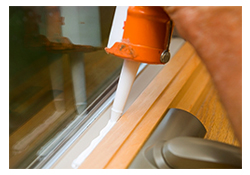

Simple and inexpensive actions can help you save energy and money during the cool fall and winter months. Try some of these free and low-cost energy efficiency improvements to save on heating this winter.
Open curtains on your south-facing windows during the day to allow sunlight to naturally heat your home, and close them at night to reduce the chill you may feel from cold windows.
When drawn during cold weather, most conventional draperies can reduce heat loss from a warm room up to 10 percent. Therefore, in winter, you should close all draperies at night, as well as draperies that don't receive sunlight during the day.
Two draperies hung together will create a tighter air space than just one drapery. One advantage is that the room-side drapery will maintain around the same temperature as the interior space, adding to a room's comfort.
Seal the air leaks around utility cut-throughs for pipes ("plumbing penetrations"), gaps around chimneys and recessed lights in insulated ceilings, and unfinished spaces behind cupboards and closets.
Look for gaps around pipes and wires, foundation seals, and mail slots. Check to see if the caulking and weather stripping are applied properly, leaving no gaps or cracks, and are in good condition. Check the exterior caulking around doors and windows, and see whether exterior storm doors and primary doors seal tightly.
Inspect windows and doors for air leaks. See if you can rattle them, since movement means possible air leaks. If you can see daylight around a door or window frame, then the door or window leaks. You can usually seal these leaks by caulking or weatherstripping them. Check the storm windows to see if they fit and are not broken.
Use a heavy-duty, clear plastic sheet on a frame or tape clear plastic film to the inside of your window frames during the cold winter months. Make sure the plastic is sealed tightly to the frame to help reduce infiltration.
Install tight-fitting, insulating drapes or shades on windows that feel drafty after weatherizing.
An insulating window panel or pop-in shutter typically consists of a core of rigid foam board insulation. You can push or clip it into the interior of a window. The panels are made so that their edges seal tightly against the window frame. Seals can be made from magnetic tape or Velcro. No hinges or latches are required.
Insulating window panels have R-values between 3.8 and 7. They are also fairly inexpensive, whether you buy a kit or make your own, but you will need space to store them when they're not in use.